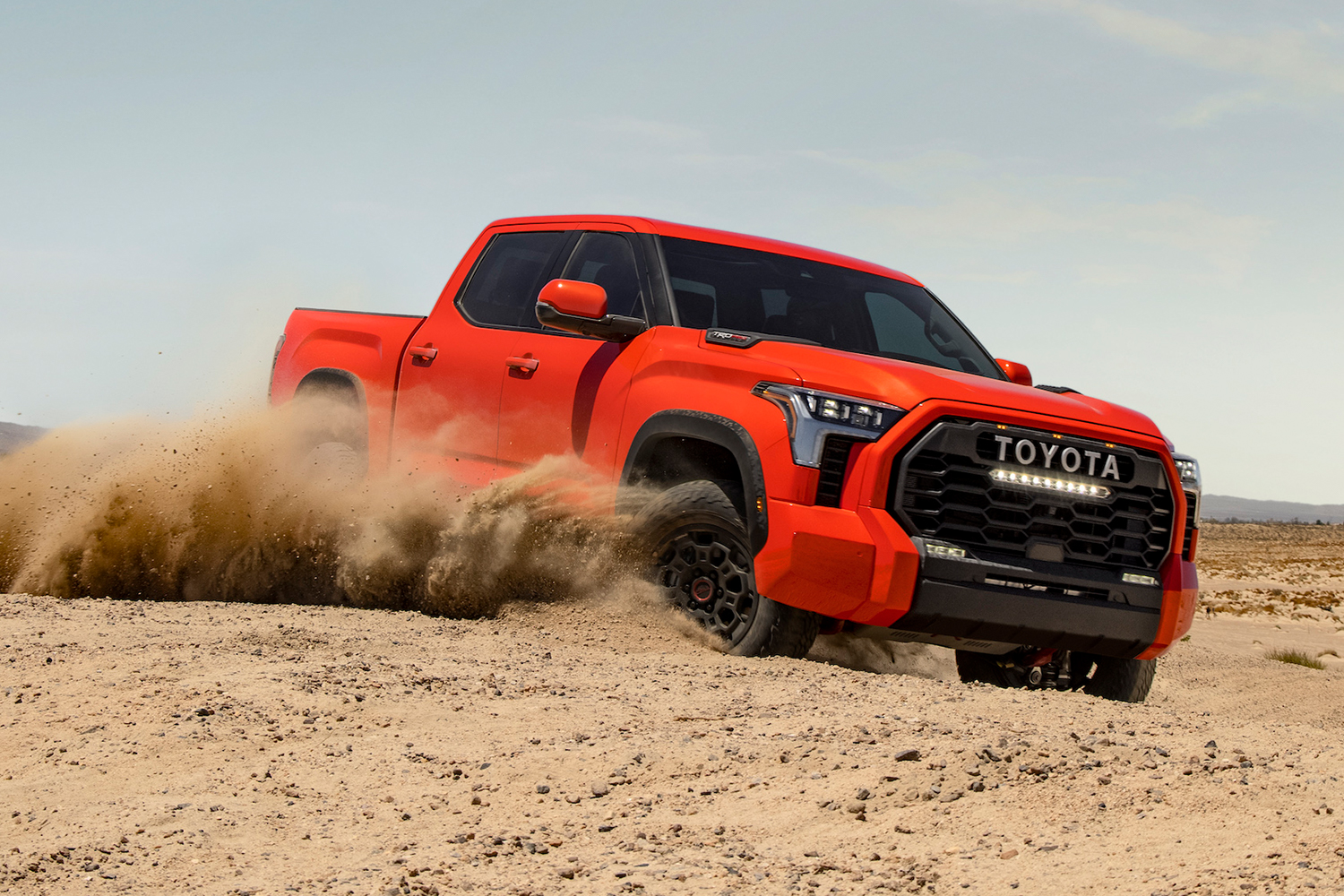Toyota unveiled the all-new 2022 Tundra this week, the first redesign of the full-size pickup in 15 years. If you’re wondering what took them so long, consider the fact that, while they haven’t been able to rival competitors like the Ford F-150, Chevrolet Silverado and Ram 1500, they’ve carved out a dedicated base that drives trucks until the wheels fall off.
In fact, as The Drive points out, when Toyota was working on the new Tundra design, the company bought back a previous-generation pickup that had made it past the million-mile mark in order to figure out exactly what made it “hard to kill.” With a road-tested design like that, what incentive did Toyota have to redesign its full-size truck from the ground up?
In short: Money. In the list of the 25 best-selling vehicles in the U.S. last year, the three top spots were taken by the aforementioned competitors. A Toyota truck made it on the list — the Tacoma, the automaker’s smaller mid-size option, at number 10 — but Toyota apparently feels its ready to make a better play for the full-size market, and there’s plenty in the new 2022 Tundra to be excited about.
In the performance department, Roadshow notes that while the other light-duty trucks have more engine options, the Tundra has just two — a 3.5 twin-turbo V6 (called the i-Force) and a hybrid version of that same setup (i-Force Max) — and they’re more compelling than they seem. Yes, that means there’s no more V8 option, but not only does the base V6 here offer more horsepower and torque than the largest outgoing engine (389 hp, 479 lb.-ft.), the hybrid version is even more powerful (437 hp, 583 lb.-ft.). Both of those sets of numbers beat the analogous models from Ford, Chevy and Ram, per Roadshow.
There are plenty of other engineering upgrades that should offer a better overall pickup experience, from a new boxed, steel-ladder frame to an aluminum-reinforced composite bed to the multi-link rear suspension. But as Car and Driver notes, while the Tundra has been staying the course the last 15 years, the F-150 and Silverado have been redesigned three times, and Ram went through two iterations. That means the Tundra’s style was due for a major upgrade as well.
What the Toyota team came up with is something called “technical muscle,” which we think is actually the best term to describe pretty much all modern trucks. They’re aggressive, but mostly embracing a futuristic feel as opposed to retro aesthetics. The Tundra achieves that through a humongous grille and a number of severe sculpted elements. This carries over to the interior, which is more comfortable than past models (and also offers an available 14-inch touchscreen, though an 8-inch model is standard).
Here’s an example of just how different the new Tundra looks:
Pricing hasn’t yet been revealed. Expect that closer to when the Tundra goes on sale later this year. But it will vary a lot; while there are only two powertrain options, there are a number of trims and configurations.
The Tundra will be offered in two four-door models, the Double Cab (shorter, but longer bed options) and CrewMax (longer, but shorter bed options), and two- or four-wheel drive. For trims in ascending order, there’s SR, SR5, Limited, Platinum and 1794, some of which will be available with high-performance TRD packages, including Pro, Off-Road and Sport.
You can read more about the new Tundra, and see if it’s worth a place in your garage, over at Toyota.
Thanks for reading InsideHook. Sign up for our daily newsletter and be in the know.
